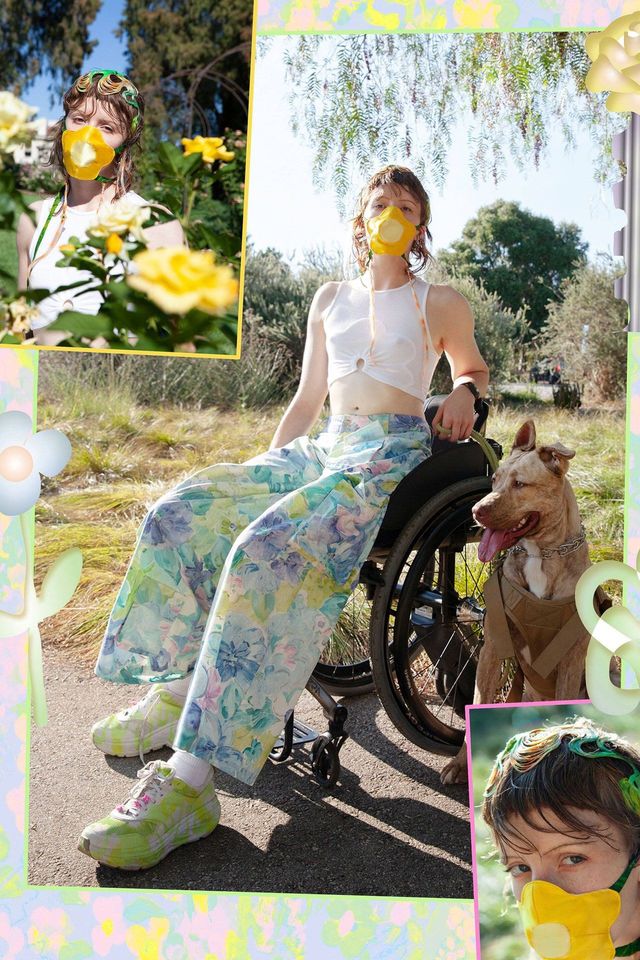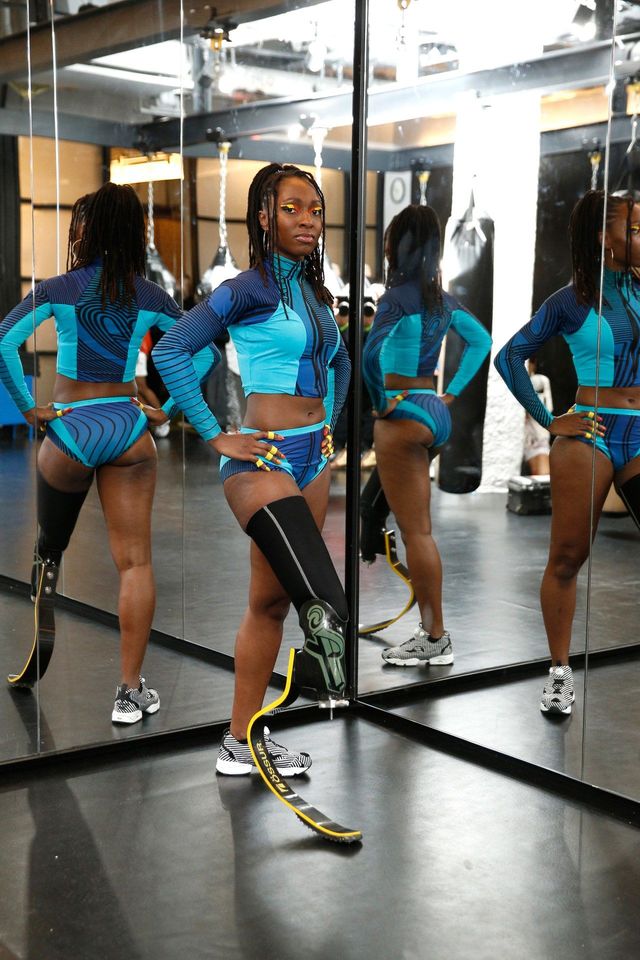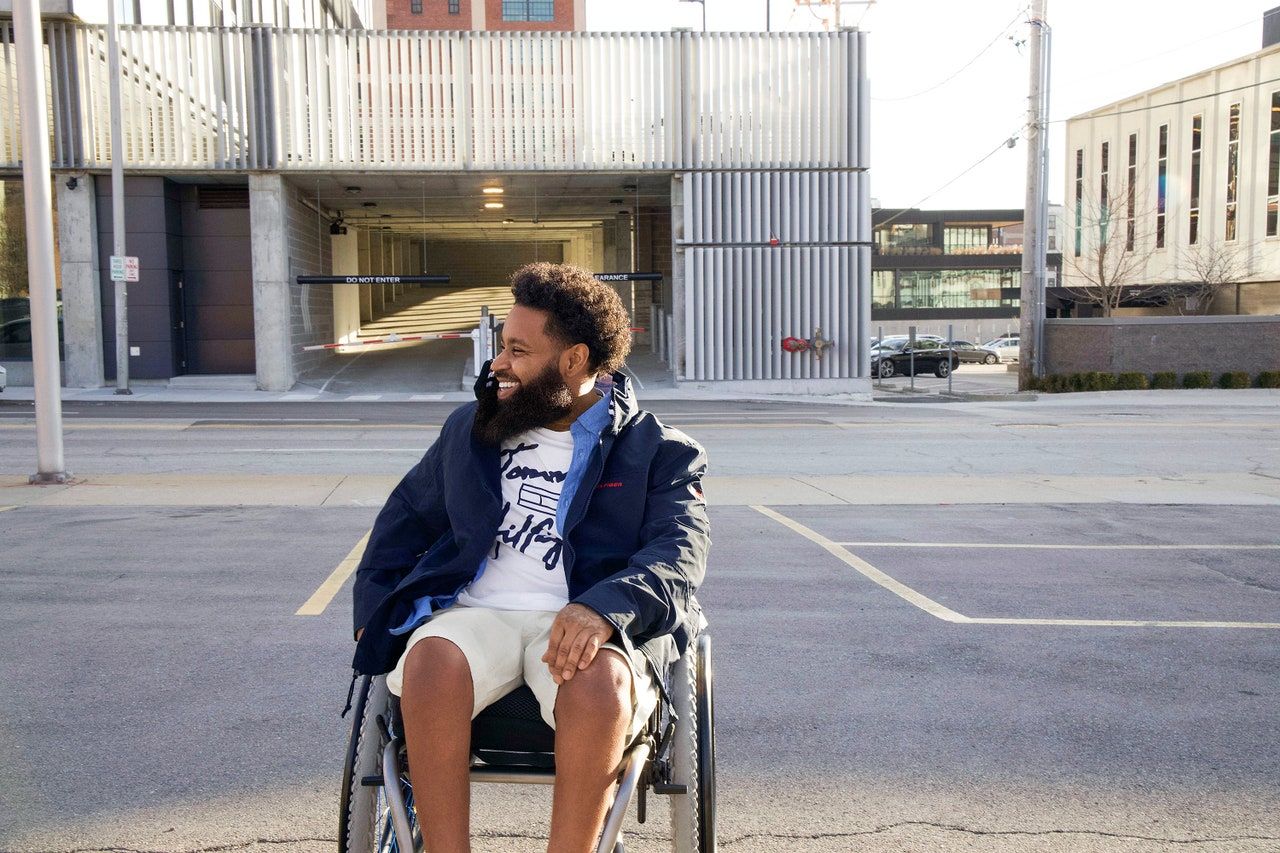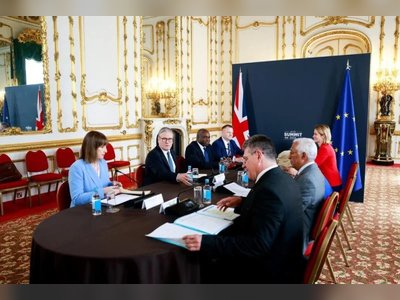
This Is What’s Missing in Fashion’s Inclusivity Movement
New York Fashion Week is 10 days away, and we’re already anticipating the week’s big themes. Some of us are predicting a roaring ’20s-style exuberance, albeit one slightly dulled by the Delta variant; sustainability will surely be a talking point, given the industry’s urgent need to address climate change; and we’re continuing to push for greater inclusivity and diversity on and off the runways. The Black in Fashion Council showroom is returning for a third season with an exciting roster of young Black designers, and the CFDA has welcomed dozens of little known up-and-comers to the NYFW calendar for the very first time. There’s a palpable “come one, come all!” spirit-but are all really welcome?
Despite fashion’s rallying cries for inclusion, our understanding is pretty limited: We apply it to race, gender, sexuality, age, size, and religion, but rarely to one’s abilities. In my almost-decade of fashion week reporting, I’ve never heard a designer mention how their collection might appeal to someone with limited use of their arms or how a new trouser would work for someone with a prosthetic. I can think of just one or two instances when our seasonal trend report has featured a look worn by a disabled model. How did those standing-room-only venues of seasons past work out for guests in wheelchairs? And have runway show producers considered the sensitivities of epileptic and visually-impaired people when they designed their lighting?

If those questions have never crossed your mind, you’re hardly alone. It’s a chicken-and-the-egg problem: Because we rarely see disabled people at Fashion Week-on the runway, in the audience, or in the backstage crush-we don’t consider how the shows and collections might relate to them. And because the shows and collections don’t relate to them… we don’t see disabled people at Fashion Week. Thus the cycle continues. The concern is the same as the one created by decades of exclusively white, size-00 models: “Fashion is giving people a warped view of what the world looks like,” Christina Mallon, the chief brand officer at Open Style Lab, says. “Fashion and beauty and the runway create culture, and we need to create a culture that’s truly inclusive.”

The optics of the runways don’t accurately reflect the demand for adaptive fashion, i.e. clothing and accessories designed for people with disabilities. The market is expected to grow to $400 billion by 2026. Target, Nike, and JC Penney have introduced adaptive products, and e-commerce platforms like Juniper Unlimited stock a few dozen small adaptive brands. While these are essential steps in meeting the needs of disabled shoppers, the clothes tend to be more functional than fashionable; when it comes to luxury ready-to-wear, there’s virtually nothing.
“The market needs a high-end voice,” says Maria O’Sullivan-Abeyratne, CEO and founder of Adaptista, a fashion-forward adaptive platform launching in November. “In the history of the internet, disabled people have never been able to go to a luxury brand’s website and buy anything, really, unless it’s a candle.” Adaptista will offer a range of adaptive items at different price points, but the overall feel will be significantly more elevated than most adaptive platforms out there.
The question then becomes if and when ready-to-wear and luxury brands will create products that can be sold on Adaptista. While adaptive design can pose challenges-O’Sullivan-Abeyratne acknowledged that for most brands, it’s an entirely new market-independent labels like Chromat and Collina Strada are already making beautiful clothes for people with disabilities. (See: Aaron Philip in Collina Strada’s fall 2021 lookbook and Mama Cax’s turns in multiple Chromat shows.) Imagine the creative solutions, collections, and content the world’s most famous and beloved brands could come up with.

So far, Tommy Hilfiger is the only global designer to invest heavily in adaptive fashion; he launched his successful Tommy Hilfiger Adaptive line in 2017. (It’s mostly sportswear and basics, but feels more “designed” than other adaptive brands.) His fall 2021 Adaptive collection will debut on this year’s Runway of Dreams show on September 9th. “When we launched, no other global lifestyle brand was modifying their clothing for people with disabilities-we were the first,” explains Sarah Horton, a senior director of innovation and integrated marketing at the brand. “The fashion industry focused only on a few aspects of inclusion. There was no existing blueprint-our brand built the model from the ground up.”
If Hilfiger’s “blueprint” seems daunting to other designers, Mallon insists there are small, inexpensive changes any brand can make to boost the accessibility of their collections now. “Tommy Hilfiger can create a separate line because it’s a global company, but for smaller designers, it’s smart to keep everything in one brand,” Mallon explains. She named Chromat’s Becca McCharen-Tran as an example: “Inclusivity is the cornerstone of her brand, and Becca uses this concept of universal design,” Mallon says. “Her adaptive garments still work for everyone else. A separate collection doesn’t have economy of scale, and then you have the issue of the clothes being too expensive to be accessible. So making garments that work for a large number of people-whether they’re disabled or not-can future-proof you.”
O’Sullivan-Abeyratne has another term for it: “accidentally adaptive.” She and Mallon both wear a lot of Pleats Please by Issey Miyake because the signature knife-pleated dresses and separates are stretchy, comfortable, and happen to come without zippers or buttons. (O’Sullivan-Abeyratne has ankylosing spondylitis, a rare form of arthritis that affects her spine, and Mallon’s arms are paralyzed due to a motor neuron disease.) “A lot of brands are actually catering to the disabled community already, but they have no idea,” O’Sullivan-Abeyratne adds. “But a lot of the hesitancy just [comes down to] fear. Designers are afraid to enter the adaptive market because they think they’ll make a mistake or say the wrong thing, but there are so many ways they can get started. There are magnetic zippers that look exactly like regular zippers, but would give someone who’s had a stroke or has a limb difference the freedom to dress themselves. Or you can use snaps instead of buttons, which a lot of designers already do,” she adds. “It really just takes a little bit more thinking in design, and a lot more talking to people who need this kind of clothing.”

O’Sullivan-Abeyratne pointed out that between 20 and 26% of the U.S. population has some kind of disability; globally, it’s an estimated 1 billion people, and the number is expected to rise. Mallon said she’s received numerous calls from COVID-19 survivors with long-haul effects that unexpectedly put them in wheelchairs. “This is going to create a radical change in the fashion industry, because there are a lot of people becoming disabled who weren’t before, and they’re realizing they’ve been completely left out of design decisions,” she says.
It wasn’t until sustainability and climate change became a key theme of the ready-to-wear and couture shows that the industry began taking real action; the same was true of the call for diversity several years back. To see adaptive designs and disabled models at the spring 2022 shows would instantly accelerate the movement and influence greater cultural change. “I do expect to see an increase of models with disabilities at the shows this September,” Mallon says. But what’s missing, she says, is commitment from brands to actually address their needs. “I think everyone is waking up to this movement, but the brands aren’t acting yet, and we need to hold them accountable.”
Independent designers like Chromat, Collina Strada, and Christian Siriano are indeed a glimmer of hope. News broke earlier this year that Siriano was collaborating with Selma Blair on an adaptive line, prompted by Blair’s struggle to find clothes that accommodate her needs after being diagnosed with multiple sclerosis in 2018. Siriano’s team declined to share details or a launch date, but confirmed the project was in the works. “I think that will really change things, because Christian is already on the runway at New York Fashion Week,” Mallon adds.

In the near term, Chromat’s show on September 12th is likely to be a highlight of NYFW: McCharen-Tran is introducing a new range of swimsuits designed for trans women, in part inspired by her frequent collaborator, the artist and trans rights activist Tourmaline. The bikinis will come with varying levels of coverage, and some pieces will be convertible, like a thong that turns into a skirt. It’s yet another breakthrough for a designer who’s been committed to body positivity in every way since 2010, both in casting models of different backgrounds, sizes, ages, and abilities and in creating clothes that work for different body types. “We’re making garments that help people feel more comfortable in their bodies and create new lanes for how they see themselves,” she says. “When I think of ‘adaptive,’ I think of fully morphing and transforming-something that can really adapt to a person.” Whether that person has a disability, is curvy, or had a mastectomy is hardly the point.
Will this be the season McCharen-Tran’s peers follow her lead? “I’d love to see more disabled people on the runways and in campaigns, and more plus-size models,” she says. “Designers have gotten the memo about casting racially diverse models, but that’s not where it ends-there’s age, gender, ability… And the harder question is who are the designers, who are the owners of the brands? Are they diverse, too? That’s when we will really see true change.”
On that note, Mallon pointed out that even in the adaptive market, few brands are actually designed by someone with a disability. It’s an issue that ultimately comes down to access to education: “The fashion schools aren’t accessible,” she says. “We have to democratize fashion design and make sure we’re thinking about accessibility at every point if we want to see disabled designers at Fashion Week.”
Adaptista is sponsoring a disabled student to complete a degree in fashion design next year, and O’Sullivan-Abeyratne has two adaptive collections of her own in the works: a wedding collection, inspired by her own struggle to find a wedding dress that worked for her, as well as a fetish and bondage line, “because people just don’t think that anyone with a disability has a sex life!” she says.
Beyond what we see on the runways next month, Sinéad Burke, CEO of Tilting the Lens and a frequent Fashion Week attendee, hopes the shows themselves will become more welcoming to disabled guests, too. “Every designer and PR agency should be asking their design team, production team, models, and attendees, ‘Do you have any accessibility requirements?’ and have resources available to them,” she says. “This might reveal that the physical space the brand has used every season is inaccessible to those who are wheelchair users, or that the flashing lights provide overstimulation for autistic people, or that having access to a mental health professional backstage [would be] a support for the busiest part of the fashion calendar.”
O’Sullivan-Abeyratne adds that press materials could be printed in braille, and there are small tweaks in music, seating, walkways, and transportation that should be considered. “It’s not going to change overnight,” adds. “But even if one of these small ideas sticks with someone, they will accumulate and help shape the future.”










